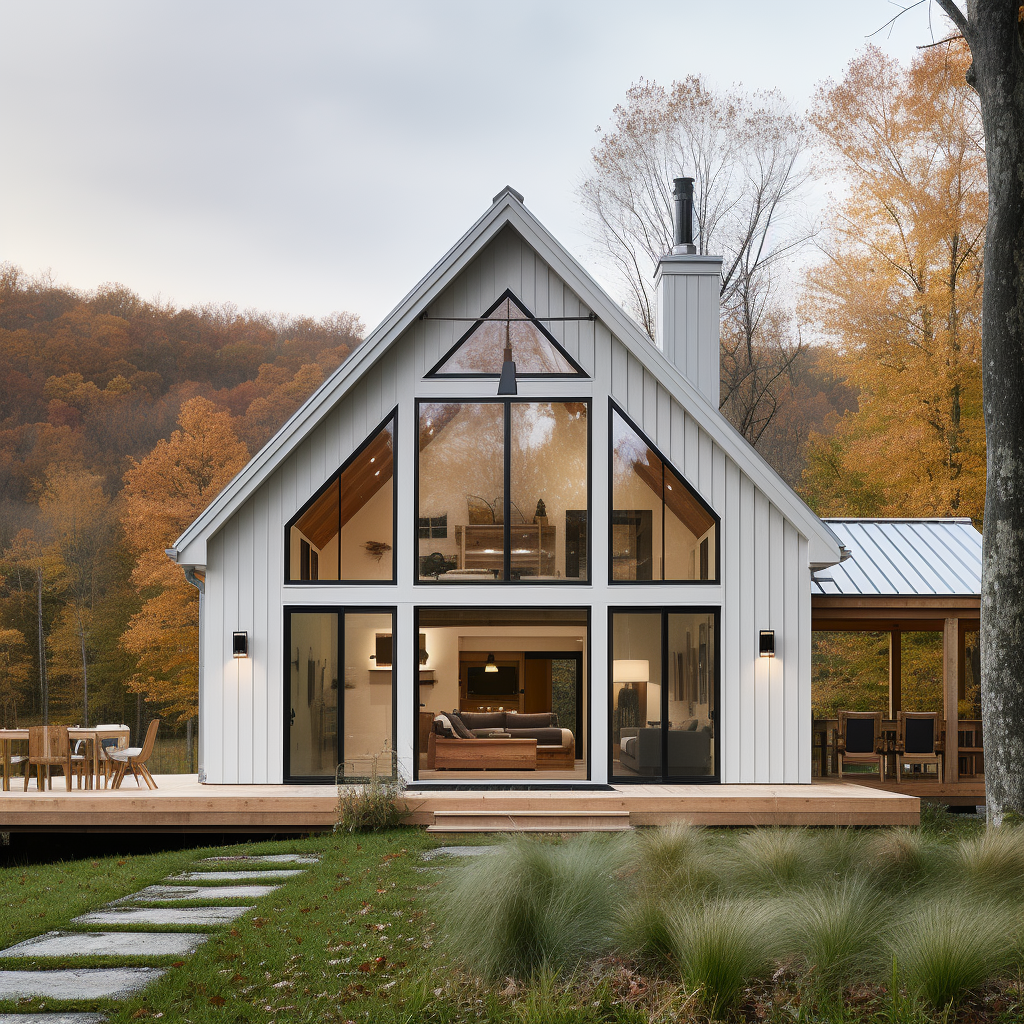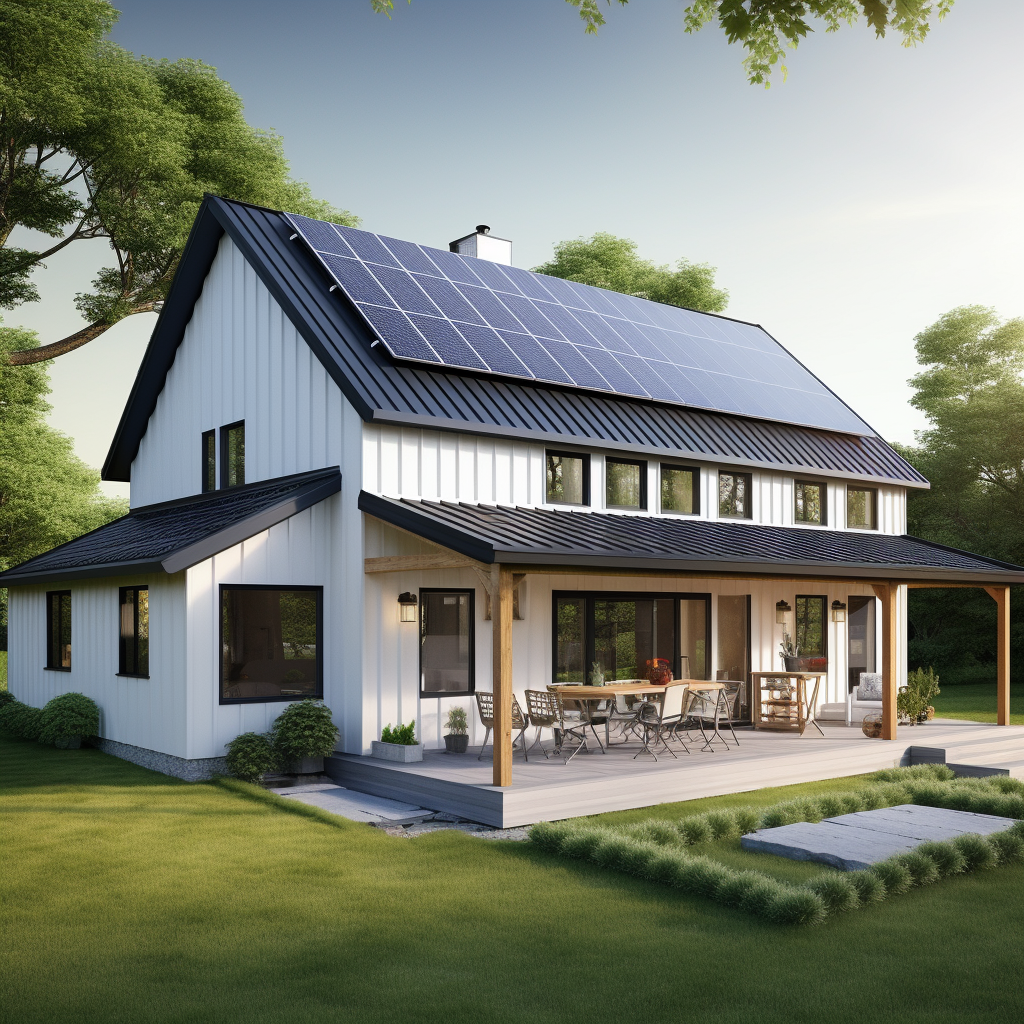Decarbonizing Your Home: Efficient and Renewable Solutions

co-founder
As the urgency to combat climate change grows, our homes emerge as notable culprits, contributing significantly to carbon emissions. In fact, an average American household emits 14 thousand pounds of CO2 annually. The silver lining? You have the power to transform your home into a more sustainable, more resilient and healthier energy-efficient haven. I live in the Northeast, where we have pretty rough winters and lose power for a few days a year. The good news is that these improvements not only save you money and are good for the planet, but it also means you’re more able to handle these annoying outages (have your neighbors over to watch TV next time the power goes out and rub it in).
This guide is your roadmap to the entire decarbonization process, providing insights into carbon types, renewable energy alternatives, and more. If you own a home or aspire to, this guide will equip you with everything you need for a carbon-neutral home.
The Inflation Reduction Act has also made it more financially appealing to undertake sustainable home improvements, offering various tax incentives and rebates.

The Imperative of Home Decarbonization
While it's common knowledge that carbon emissions are detrimental to the environment, what might not be so apparent is the significant role our homes play in contributing to this crisis. From electricity consumption to heating and cooling systems, our homes can be veritable carbon factories. By decarbonizing your home, you make a positive impact in several ways:
- Combat Climate Change: Reducing carbon emissions from your home aligns with global initiatives such as the Paris Agreement, which aims to keep global temperatures from rising more than 2°C above pre-industrial levels.
- Financial Benefits: Energy-efficient homes are cheaper to run in the long term. The initial investment in green technologies often pays off through lowered utility bills.
- Enhanced Living Experience: Energy-efficient homes often provide a more comfortable living environment with better air quality and temperature regulation. They also tend to be more resilient. With solar and a battery, your home can keep running even when your neighbors have lost power.
Decoding Operational and Embodied Carbon
When considering home decarbonization, it's crucial to understand the two primary types of carbon emissions involved:
- Operational Carbon: This type of carbon is emitted during the everyday operation of your home. For example, when you use electricity for lighting or power up your heating or cooling systems, you're contributing to operational carbon emissions.
- Embodied Carbon: This refers to the carbon emissions produced during the construction of your home. It encompasses everything from the energy used in extracting raw materials to manufacturing and transporting building components.
Understanding these two types of carbon is vital for implementing a comprehensive decarbonization strategy.
Your Action Plan: Steps for Going Green
Streamlining Energy Use
Energy efficiency should be your first line of defense against operational carbon emissions. Simple steps include:
- Switching to Energy Star Appliances: These are designed to operate more efficiently, using less energy and water.
- Inventory your current appliances and identify those that are outdated or inefficient.
- Prioritize replacements based on energy consumption (e.g., air conditioners, water heaters, refrigerators).
- Research Energy Star-certified replacements and make the investment.
- Look into federal or state tax credits that could cover up to 30% of the cost.
- Upgrading to LED Bulbs: LED bulbs consume up to 80% less electricity compared to incandescent bulbs and have a longer lifespan.
- Assess all lighting fixtures and note the type of bulbs currently in use.
- Calculate the upfront cost of replacing incandescent or CFL bulbs with LED equivalents.
- Purchase LED bulbs in bulk to save on cost.
- Replace the bulbs room by room, starting with the most frequently used areas.
The Ins and Outs of Insulation
 Proper insulation is the cornerstone of an energy-efficient home.
Proper insulation is the cornerstone of an energy-efficient home.
- Types of Insulation: Products range from traditional fiberglass insulation to modern, more efficient types like foam board or reflective systems.Here’s what you need to do to get started:
- Conduct a home energy audit to pinpoint areas of energy loss. A tax credit may cover 30% of the audit cost.
- Determine the type of insulation that best suits your home (fiberglass, foam board, etc.).
- Hire a certified contractor to install the insulation.
- Technological Advances: Products like Aerobarrier offer advanced envelope sealing, preventing air leaks and improving energy efficiency further.
The Role of Smart Controls
 Smart home technology can provide a further layer of control over your home's energy consumption.
Smart home technology can provide a further layer of control over your home's energy consumption.
- Thermostats: Smart thermostats learn your habits and adjust heating and cooling systems accordingly.
- Research smart thermostats that are compatible with your heating and cooling systems. They’re all pretty good anymore, and most of them work fine with iPhone and Android, so we don’t have a personal favorite. I have a Nest installed.
- Install the smart thermostat and set it up to optimize energy use based on your daily patterns.
- Lighting: Automated lighting systems can be programmed to turn off when not needed, reducing energy wastage.
- Explore smart lighting solutions that can be controlled via smartphone.
- Replace old switches with smart switches and sync them to your phone.
The Array of Renewable Energies
 The use of renewable energy can significantly offset operational carbon emissions. The options include:
The use of renewable energy can significantly offset operational carbon emissions. The options include:
- Solar Panels: Harvest energy directly from the sun. Here’s how to get started:
- Evaluate the solar potential of your home with tools like Google's Project Sunroof.
- Contact multiple solar providers for quotes.
- Take advantage of the tax credit that covers 30% of qualifying solar panel expenses.
- Geothermal: Utilizes heat from below the Earth’s surface for energy-efficient heating and cooling.
- Research geothermal options suitable for your region.
- Get a quote from a certified geothermal installer.
- Leverage tax credits to offset initial installation costs.
Material Choices for a Low-Carbon Home
 When it comes to embodied carbon, material choice is critical.
When it comes to embodied carbon, material choice is critical.
- Recycled or Reclaimed Materials: These can often be used in place of new materials, saving on both costs and carbon.
- For renovation or new construction, consult with your architect or contractor about using recycled or reclaimed materials.
- Make sure to source these materials from certified suppliers, especially if you’re going to get your home certified.
- Certifications: Look for materials that have been certified by organizations like LEED or the Living Building Challenge to ensure they meet sustainability standards.
Financial Incentives
- Tax Credits: Various federal tax credits cover a portion of the costs for energy audits, renewable energy installations, and energy-efficient appliances.
- Rebates: States and local utilities often offer rebates for energy-efficient upgrades, with special provisions for low-income households. The availability of these rebates varies by state.
- Timing: Most of these incentives are available now and are scheduled to last through various dates, from the end of 2031 to 2035, depending on the specific program. Therefore, planning your projects around these dates can maximize your financial benefits.
By taking these actionable steps, you can systematically decarbonize your home while taking advantage of financial incentives to offset your initial costs. Remember, the sooner you start, the sooner you'll begin saving money and reducing your carbon footprint.
Conclusion
The journey to a carbon-neutral home is both rewarding and financially beneficial. With legislative support like the Inflation Reduction Act making it even easier, there's never been a better time to take the leap into sustainable living. So, take the first step today and embark on a future of lower bills, a healthier living environment, and a cleaner planet.
By elaborating on these points, you provide readers with an in-depth understanding of each aspect of home decarbonization, making the complex topic more approachable.

Renovate with EcoHome
EcoHome empowers homeowners to confidently build healthy and comfortable homes for a fair price.
Sign UpLocations View All →
NY
- Albany
- Binghamton
- Buffalo
- Esopus
- Freeport
- Hempstead
- Highland
- Kingston
- Long Beach
- Marlboro
- Mount Vernon
- New Paltz
- New Rochelle
- New York City
- Niagara Falls
- North Tonawanda
- Olivebridge
- Plattekill
- Rochester
- Rome
- Saugerties
- Schenectady
- Shandaken
- Syracuse
- Troy
- Utica
- Valley Stream
- Wallkill
- Woodstock
- Yonkers
NJ
- Bayonne
- Brick
- Camden
- Cherry Hill
- Clifton
- East Orange
- Edison
- Elizabeth
- Jersey City
- Lakewood
- Middletown
- Newark
- Old Bridge
- Passaic
- Paterson
- Toms River
- Trenton
- Union City
- Woodbridge
CT
PA
- Allentown
- Altoona
- Bethel Park
- Bethlehem
- Chester
- Easton
- Harrisburg
- Hazleton
- Lancaster
- Lebanon
- Monroeville
- Philadelphia
- Pittsburgh
- Reading
- Scranton
- Wayne
- Wilkes Barre
MD
- Abingdon
- Baltimore
- Bethesda
- Bowie
- Columbia
- Dundalk
- Ellicott City
- Frederick
- Gaithersburg
- Germantown
- Glen Burnie
- Potomac
- Rockville
- Severn
- Silver Spring
- Towson
- Waldorf



